Glass frog
That takes guts
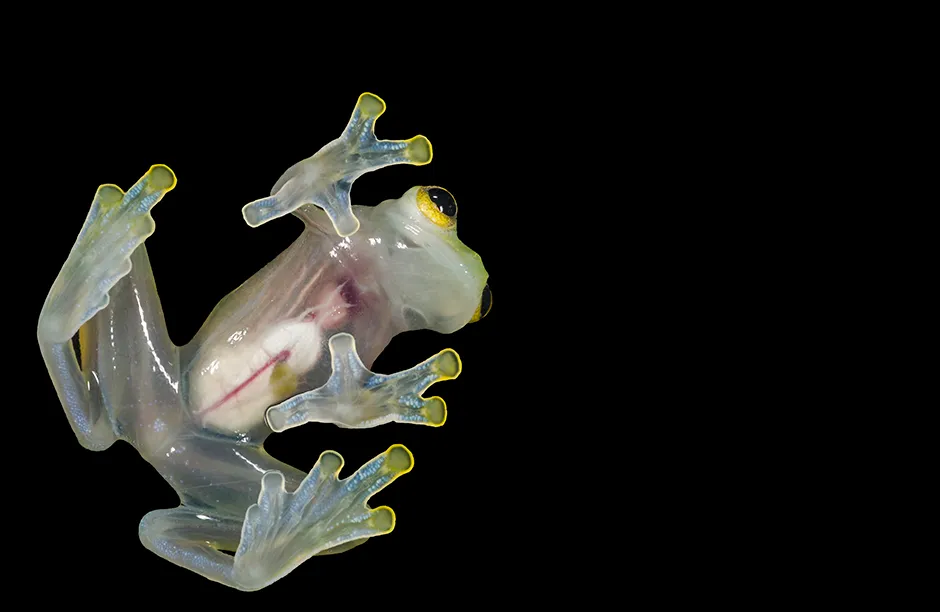
Tropical forests are teeming with predators for whom frogs are top of the menu, so these amphibians have understandably evolved some nifty defences. Glass frogs, which inhabit the humid cloud forests of South and Central America, rely on a novel form of camouflage: they bare all, or almost all. As this studio photo of Hyalinobatrachium aureoguttatum shows, their see-through skin offers up an eyeful of beating heart, blood vessels, bones and digestive tract.
But why display your innards? After all, predators can still see you. A recent study revealed the secret to their curious camouflage, and it lies not so much in their body, but their legs. As the most translucent part of the animals, their legs match the brightness of the background foliage. By blending in, the disappearing phantom limbs help to hide the true outline of these freakish frogs.
Pacific barreleye fish
The eyes have it
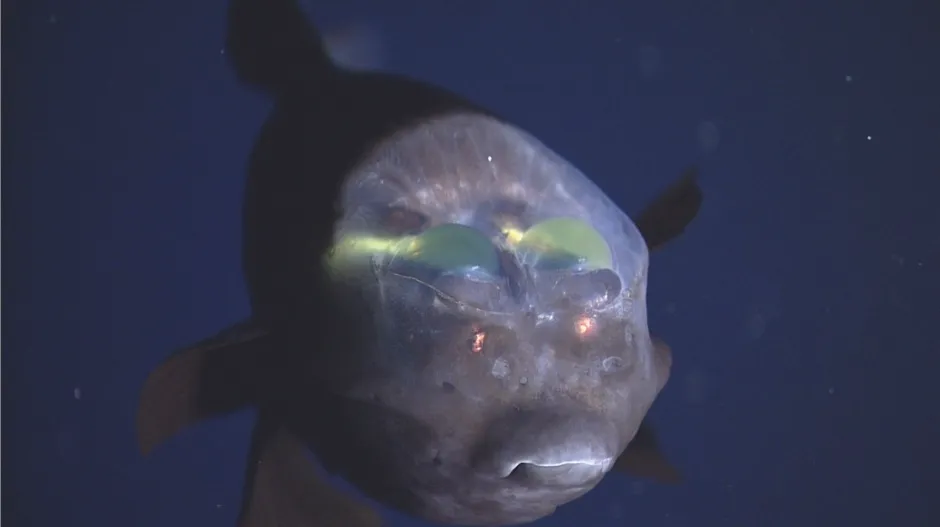
In 2004, a remotely operated vehicle (ROV) deployed at sea by researchers from Monterey Bay Aquarium Research Institute (MBARI) filmed some extraordinary video that made headlines around the world. While exploring at a depth of 600m off the coast of California, the robo-sub captured the first footage of a living Pacific barreleye or spookfish (Macropinna microstoma). Previously, the googly-eyed, deep-sea fish had only ever been found dead. Those specimens had all lost the transparent ‘hood’ that marine biologist Dr Helen Scales, author of Eye Of The Shoal, calls “a clear bubble like an astronaut’s helmet”.
Thanks to the video – a still from which appears here – scientists worked out that the barreleye’s telescopic, tubular eyes can swivel under their protective visor, enabling the fish to peer up, forwards or down. “The ocean is a near-limitless 3D environment,” says Scales, “so there’s a selective pressure for the ability to scan above and below. Plenty more fish like this are probably waiting be discovered.”
Sea walnut
Going with the flow
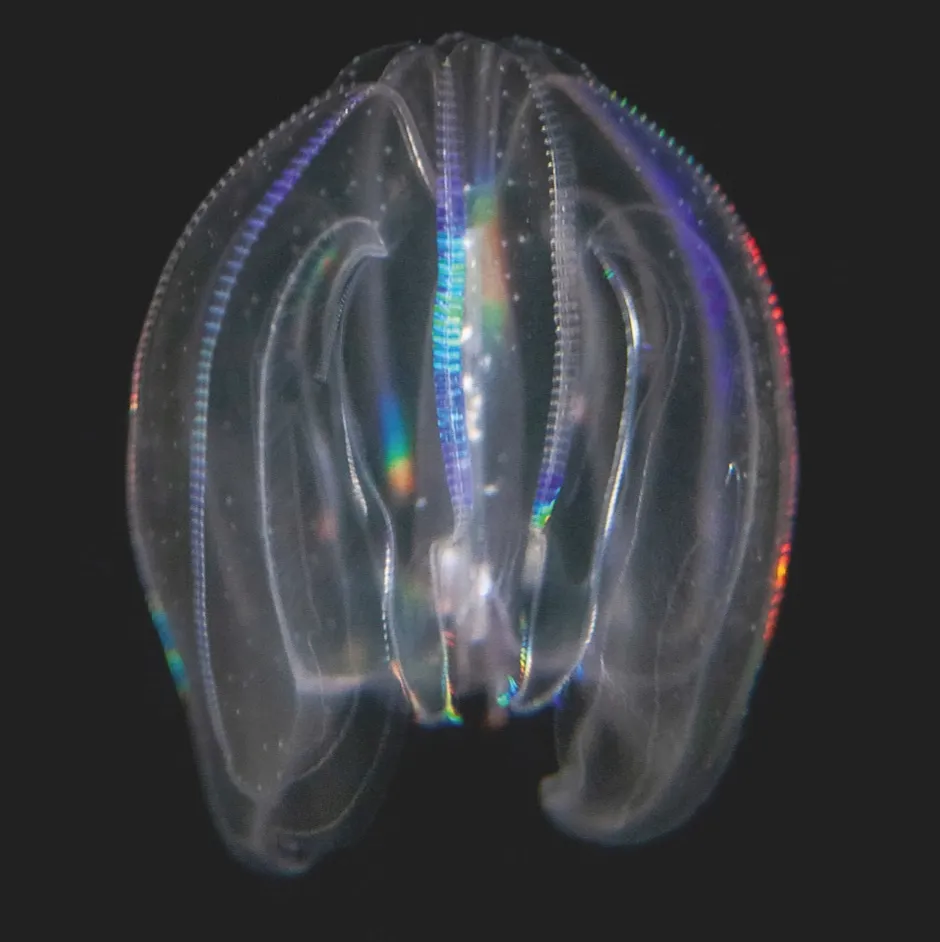
‘Brainless but beautiful’ is a pretty fair description of the Atlantic sea walnut (Mnemiopsis leidyi). Up to 97 per cent water and super-fragile (were we to handle it), the creature lacks a single decision-making structure and instead gets by with a much simpler, decentralised neural system known as a ‘nerve net’. It is among countless more-or-less transparent animals drifting through the surface waters of the world’s oceans, such as comb jellies (the group to which sea walnuts belong), true jellyfish, octopuses, squid and marine worms.
Like other comb jellies, the sea walnut moves itself forward with long, hair-like threads called combs. When bright artificial light from a sub or diver’s strobe flash hits one of them, it pulsates with rainbow colours like an underwater laser show. “Being blobby makes sense for the sea walnut and other plankton, since jelly is neutrally buoyant [it stays at the same depth without rising or sinking] and cheap to make – it’s essentially just collagen and water,” says Scales.
Discover moreeye-openingpicture stories:
- Here's looking at poo: weird and wonderful species that look like faeces
- 10 humorous pictures from the Comedy Wildlife Photography Awards 2020
- 16 incredible pictures from the Wildlife Photographer of the Year Awards 2020
Glasswing butterfly
Windows on the world
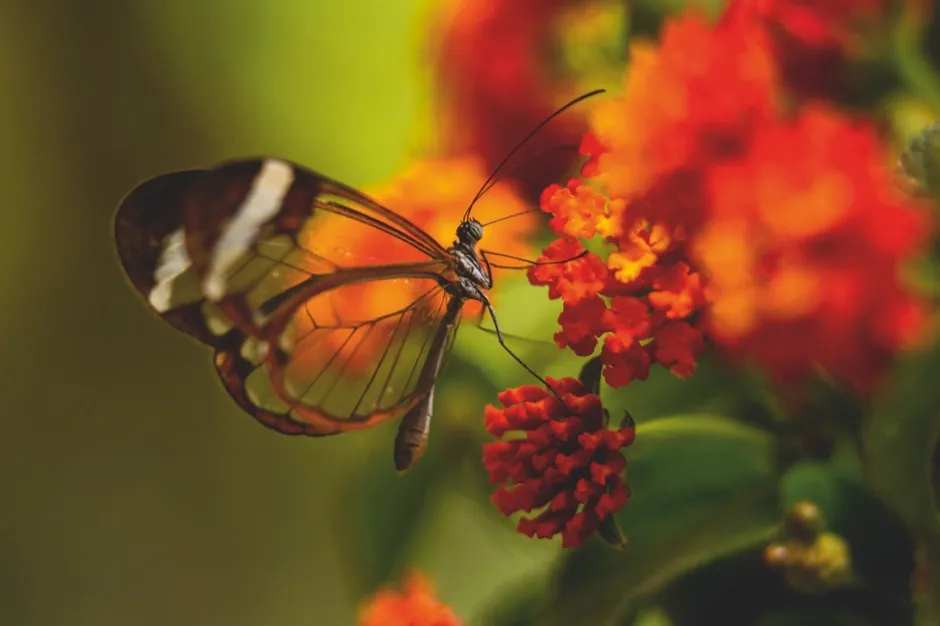
If a glasswing butterfly (Greta oto) landed on this paragraph and opened its 6cm wingspan, the text would still be perfectly readable. In their native Central America, these stunning insects are commonly known as ‘espejitos’, meaning ‘little mirrors’, although their wings are quite unlike mirrors and reflect hardly any light at all. That’s because the clear portions are scaleless and possess minuscule waxy structures called nanopillars, which are randomly arranged across the wing surface to serve as an anti-reflective coating. This adaptation may make it harder for predators to spot the butterfly, although this hasn’t yet been proven.
“Butterfly wings never cease to amaze me,” says entomologist and BBC presenter Dr Ross Piper. “They do all sorts of amazing stuff. They’ve become important not just in visual displays, including camouflage and mimicry, but in thermoregulation and the release of pheromones.”
Ghost shrimp
Vanishing act
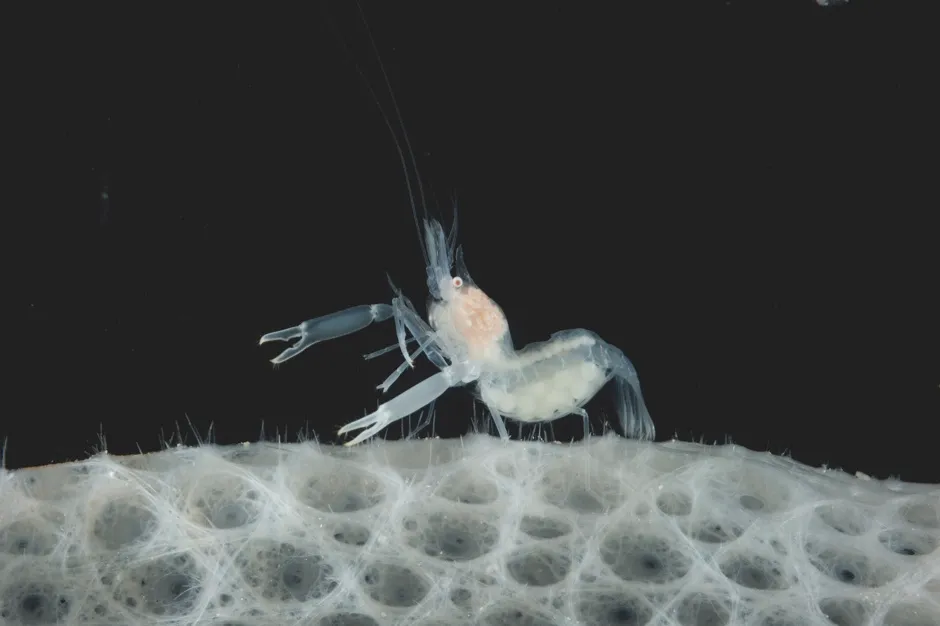
Many shrimps worldwide have exoskeletons that are to varying degrees see-through. We can gawp at their inner workings, watch their last meal being digested and – in females – see bundles of eggs developing. In the watery realm that these crustaceans inhabit, transparency is a highly effective vanishing act, enabling them to merge with their background, whether open water, seabed or reef.
Transparency is relatively straightforward for an aquatic species such as a shrimp, since the refractive index of water is far higher than that of air, and conveniently close to that of the animals’ exoskeleton and other tissues. There’s little or no difference in how light passes through water and their bodies, so they disappear. Some tiny marine shrimps have evolved an intimate relationship with sponges, clams and anemones, seldom straying from their host. The ghost shrimp pictured here is resting on its glass sponge home.
Tortoise beetle
Hiding in plain sight
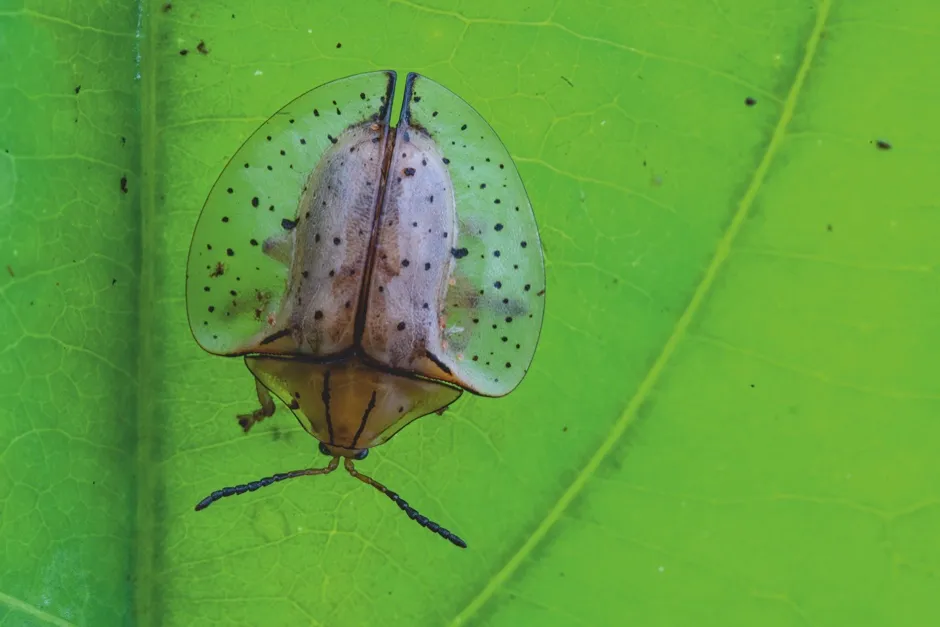
Roughly a quarter of the animal species identified so far are beetles, and their world-beating success is partly down to uniquely versatile body armour. Beetles own a pair of tough wing-cases, or elytra, that snap shut and act as swing doors for the hind wings underneath. In tortoise beetles, which can look a bit like tiny versions of their reptilian namesakes, the elytra really are special.
“Tortoise beetles feed on top of leaves, leaving them vulnerable to predation,” says Dr Ashleigh Whiffin, an entomologist at National Museums Scotland. “While some colour-match their elytra to host plants, in species such as Acromis sparsa (pictured) the edges are totally transparent. These areas are devoid of pigment, so the leaf below is visible, hiding the insect’s telltale shape.” Tortoise beetle larvae, meanwhile, have a somewhat less glamorous disguise. “They collect their faeces to use as a shield,” says Whiffin. “The faecal shield is attached to a telescoping anus, so they can even move it around if attacked!”
Namib sand gecko
Shifting sands

There are fewer see-through reptiles than amphibians. The thin, oxygen-breathing skin of frogs and salamanders naturally lends itself to becoming translucent, whereas the scales that cover lizards, snakes, turtles and crocodiles, do not. Among the reptiles, geckos are best at it. The Namib sand gecko (Palmatogecko rangei) melts into the dunes of its arid home in south-west Africa like a mirage, thanks to its ultra-pale, pink and yellowish scales. It ekes out a living by darting across the hot sand to catch crickets and other insects.
Another name for this little lizard is the web-footed gecko, due to the unusual splayed feet that help it burrow and stop it sinking in loose sand. In 2015, a team of herpetologists hypothesised that, over time, as geckos migrated to open deserts from the forests where they originally evolved, the adhesive areas on their feet moved too, from the soles to the tips of their toes. Some desert geckos have lost these sticky pads altogether.
Reader Q&A: Why do some insects look metallic?
Asked by: Rebecca Walker
Many insects, particularly scarab and jewel beetles, have vivid, metallic green, blue or gold colouration. This effect doesn’t come from pigments, but is an example of ‘structural colouration’.
Microscopic ridges and transparent layers on the surface of a beetle’s carapace act as an array of lenses that direct different wavelengths of light in such a way that some colours cancel out and others are amplified – the rainbow effect on a DVD is similarly caused by the microscopic pits on its surface.
This metallic sheen may have evolved because it offers bright colours that can serve as a mating signal over long distances. Alternatively, some researchers have suggested that it might mimic the appearance of raindrops on leaves, helping to camouflage the beetles.
The ridges and layers may also take less energy to grow than metabolically expensive pigment molecules – particularly important for insects because they regularly shed and regrow their outer skin.
- This article first appeared in issue 354 of BBC Science Focus Magazine–find out how to subscribe here
